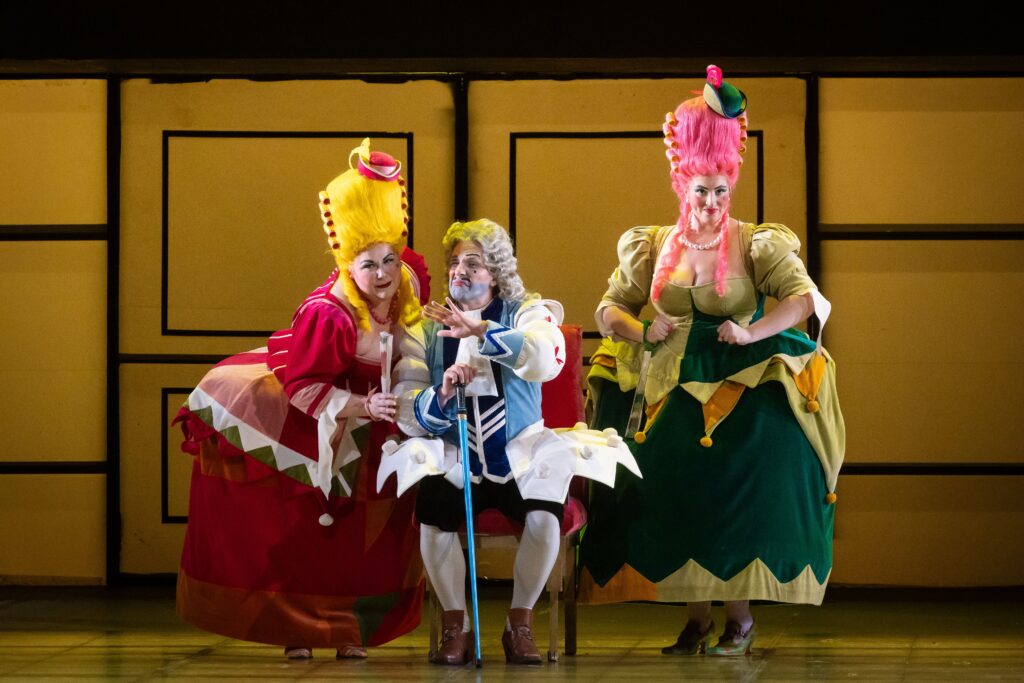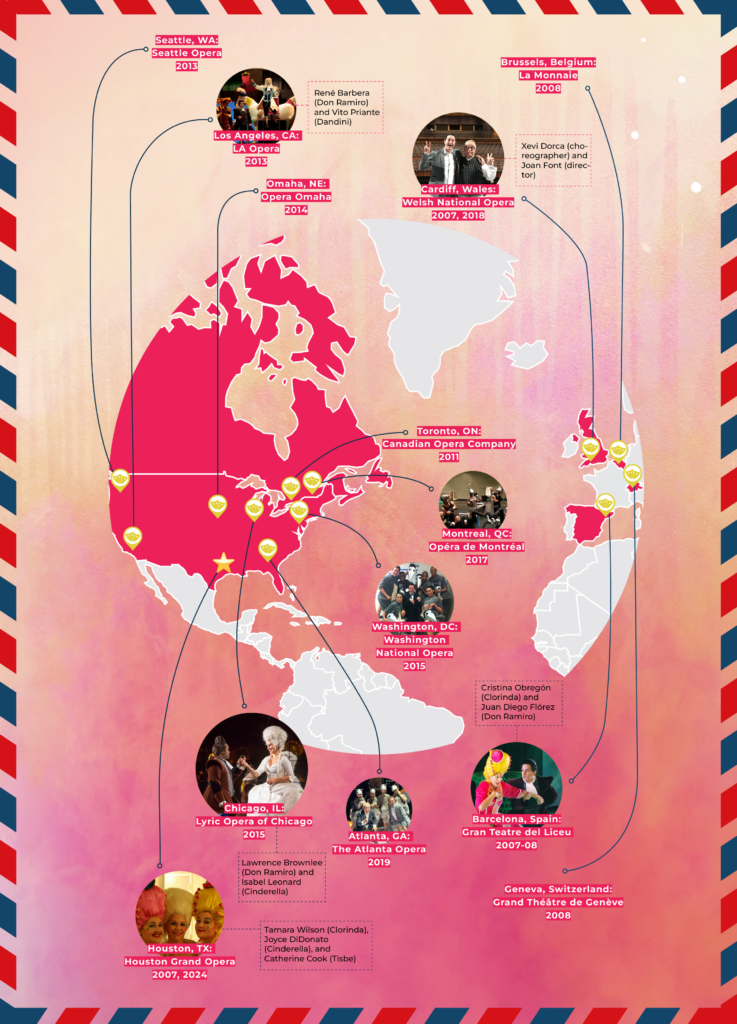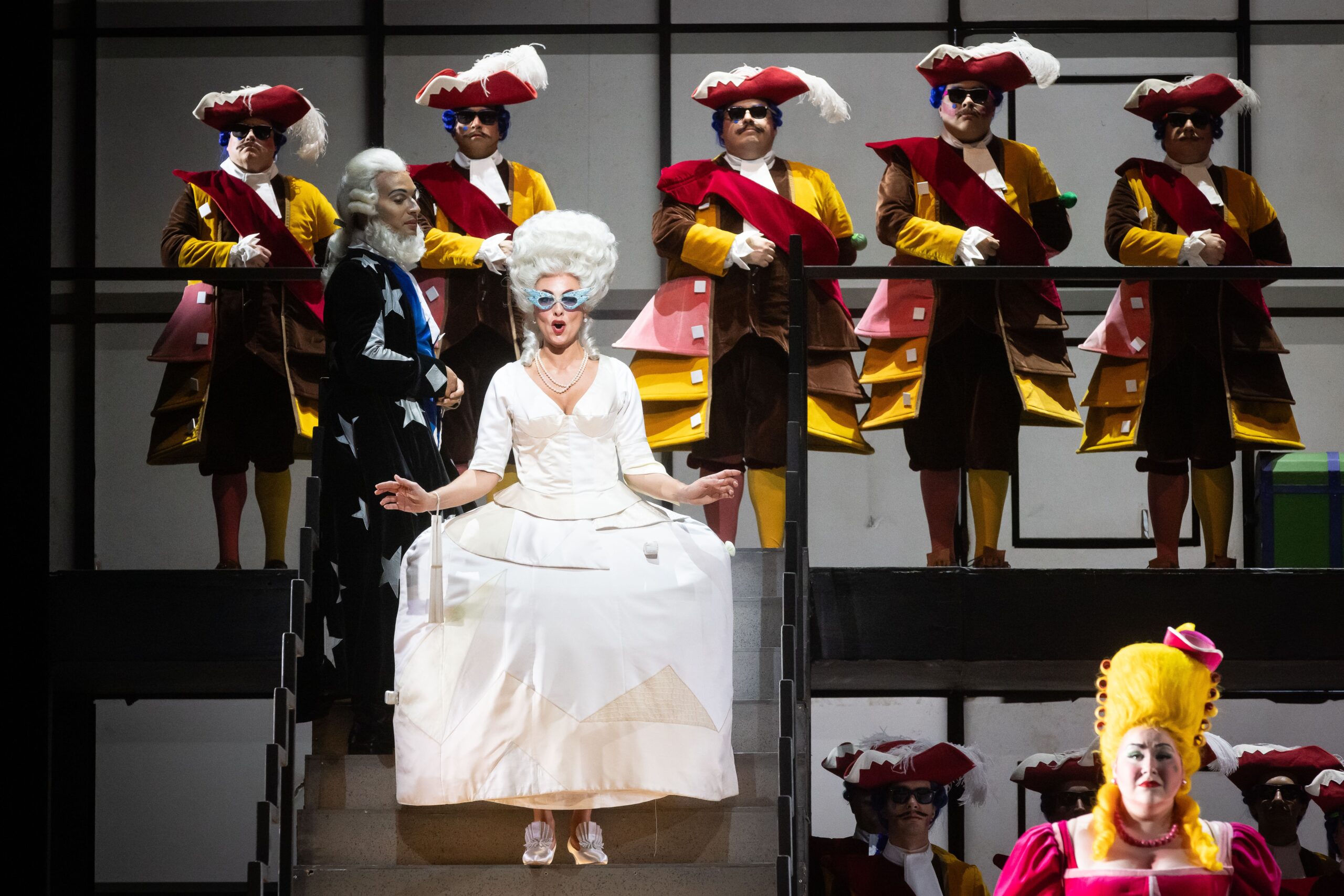Since its premiere in Rome in 1817, Rossini’s opera Cinderella has been a fan favourite. It’s most recent staging at Houston Grand Opera was a sheer delight.
Patrick Summers, artistic and music director of HGO, gave early birds to the Wortham Center a fine historical overview of the Cinderella story.
“Mythology, like Cinderella, builds up over time over many centuries; it is one of the things that explain ourselves to us. This is obviously a very deep human need because these stories, it turns out, arise in many cultures at the same time. Now because opera is an enlarged kind of storytelling, we have a lot to learn from these stories, including films from My Fair Lady to Pretty Woman. This is a story we clearly have a need to keep telling and keep watching.
“Now, most people recognize music by Giacomo Rosini, even if they might not know it as his, especially his famous William Tell Overture, which audiences still recognize as the theme from the Lone Ranger, even though the Lone Ranger hasn’t been produced in 75 years.
“One of the things that opera can do that other narrative forms of theater cannot do is the ensemble: the moments in the opera when many people sing together. If everybody in a play or a film talks at the same time, you can’t understand it, so it becomes a great, great thrill of these operas. Cinderella is filled with glorious ensembles.
“The name of the title character of Cinderella is actually Angelina. Though in this opera her family, so mean to her, they never bother to call her by her name. Angelina means in Italian little angel. And that relates her to the subtitle of the opera, the triumph of goodness.
“Houston Grand Opera was among the first US companies to program this opera at all in only our third season in 1957, when it starred the remarkable American Mezzo Soprano Frances Bible, an amazing artist who always deserves to be remembered. Nearly 20 years would pass before Cinderella appeared again in 1979 with Maria Ewing and then almost another 20 years. In 1993, the Italian sensation Cecilia Bartoli made her U.S. stage debut in this room as Rosina in the Barber of Seville by Rosini, and returned two years later as Cinderella. She ignited a sensation not only for her, but for this opera. In 2007 Joyce DiDonato was the little angel. Those remarkable women pass the baton now to Isabel Leonard, who you will hear tonight.”
Summers then took the audience back more than a thousand years to an original Chinese Cinderella tale.
“In China, the story of Yeishan, a young girl whose mother dies and appears to her as a magic fish who helps her to get ready for a festival. As Yeishan is fleeing the festival, she loses one of her golden shoes and the king uses that shoe to try to search for her. So, we see all the elements of Cinderella already in the ninth century.
“The glass slipper portion of the story in this opera is not a slipper but a bracelet. As well as the transformation of the pumpkin into the coach and the mice into horses. They all date from a story written by Charles Perrault in 1697, also a very old story.
“And it is this story – all these versions together – that the Brothers Grimm adapted into their 1812 version of Cinderella in German: Aschenputtel (The girl of the ashes). Every modern telling of Cinderella, which this opera is one, has been influenced by all of these very, very old versions.
“The Grimm Brothers Cinderella has a wishing tree instead of a fairy godmother, something we see in the Cinderella portion of Stephen Sondheim’s Into the Woods. And in the Grimm Brothers fairy tale, it’s very ‘Grimm’ indeed. The stepsisters hack off part of their foot with an axe to try to get their foot to fit into the slipper! It’s really, really tough stuff. Happily, none of that is in this very sunny opera.”
The most fun part of this production are six rats, who are actually scene-stealers more than once. These cute, scurrying critters (think of them as mice) are pantomime-like figures who not only provide a good laugh, but with their antics enhance our appreciation of the plotline. The six cast members in the rodent outfits got a rousing ovation at the conclusion.

The outrageous costumes of the cast remind one of the characters that populated the fairy-tale films of the Russian director Aleksandr Rou (1906-1973), who is the subject of an upcoming book published by Intellect Ltd of Bristol, England. Cinderella’s evil step-sisters were thoroughly unlikeable (which made the audience appreciate them more) and both the real and faux princes offered more than enough swagger for every lady in the audience to fall in love.
The entire cast delivered a flawless feast for the eyes and ears. While flawless can also sometimes mean lacking in spontaneity or verve, the exact opposite is the case here. Isabel Leonard (lead photo) was fragile charm personified, and certainly did justice to the lead role of the ‘little angel’ Cinderella that has been so ably filled by the other opera stars mentioned earlier.
For more on the ‘little angels’ who have performed at HGO, go to this link:
https://www.houstongrandopera.org/backstage-pass/little-angels
Second photo: Emily Treigle, Iurii Samoilov and Alissa Goretsky. The evil step-sisters and their father.
Both photos by Lynn Lane
About this production:
The creation of Spanish director Joan Font, this Cinderella is a co-production between HGO and three other houses: Welsh National Opera, Grand Théâtre de Genève in Switzerland, and Gran Teatre del Liceu in Font’s hometown of Barcelona. Conductor of the HGO Orchestra was Lorenzo Passerini, the first time he has conducted here. His energy was palpable, and a key element in this successful outing of Cinderella. The production has toured across two continents, including nine cities in North America—from Washington State to Washington, D.C. trace the show’s travels over nearly two decades on the road:

